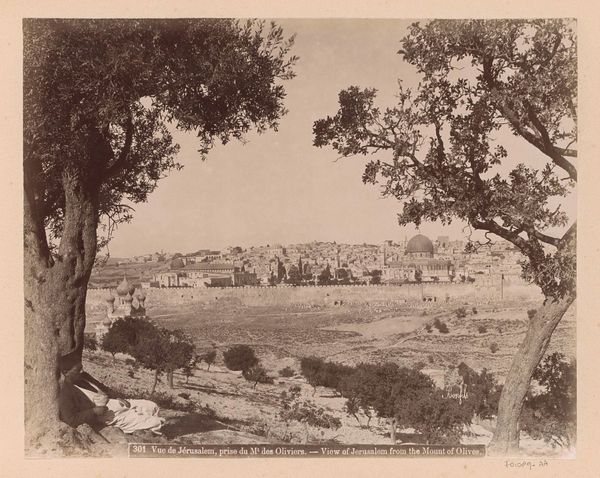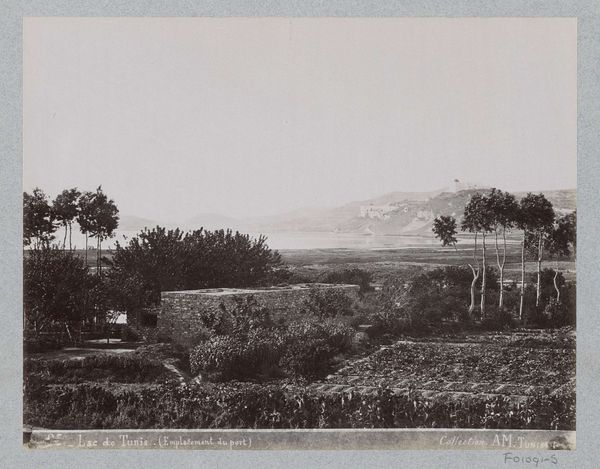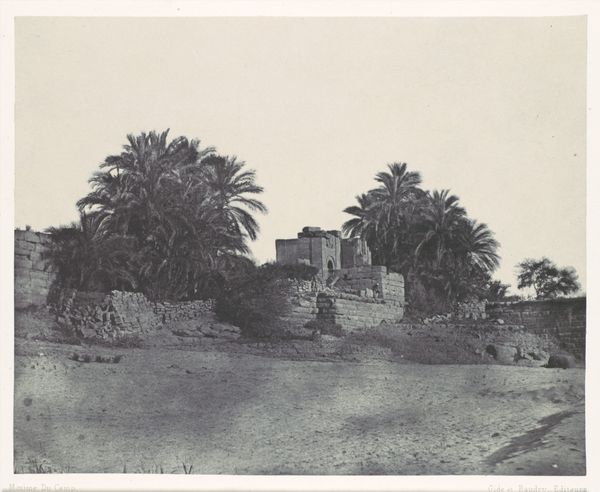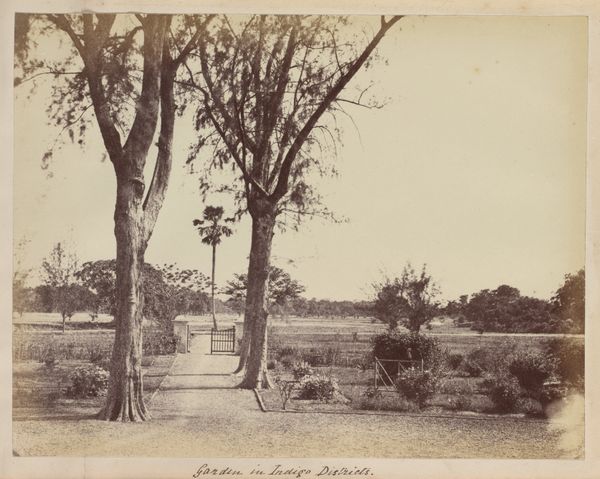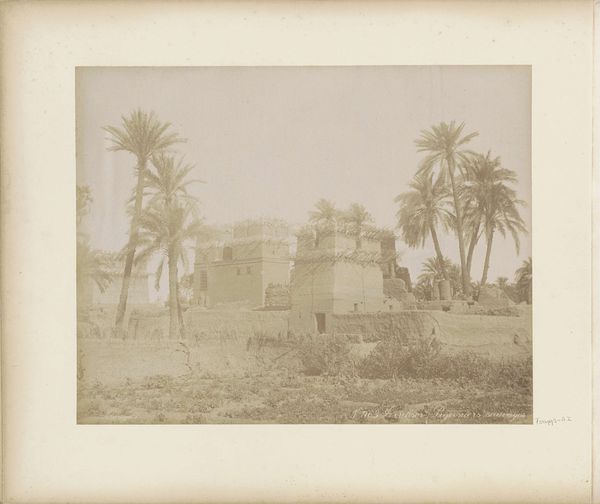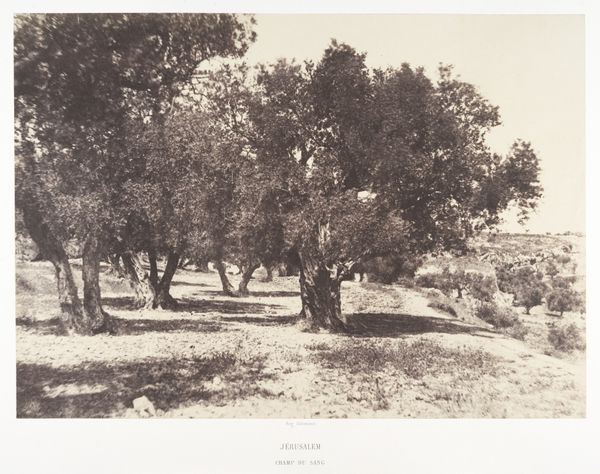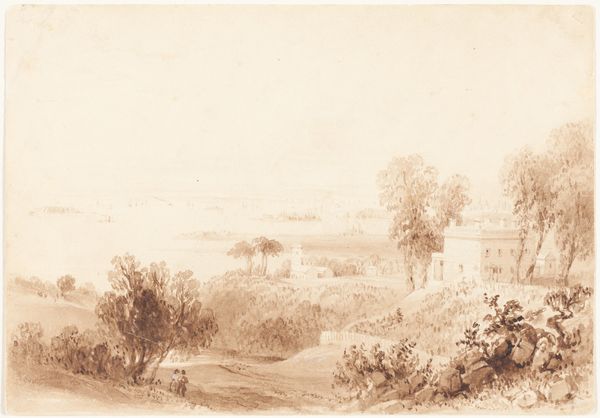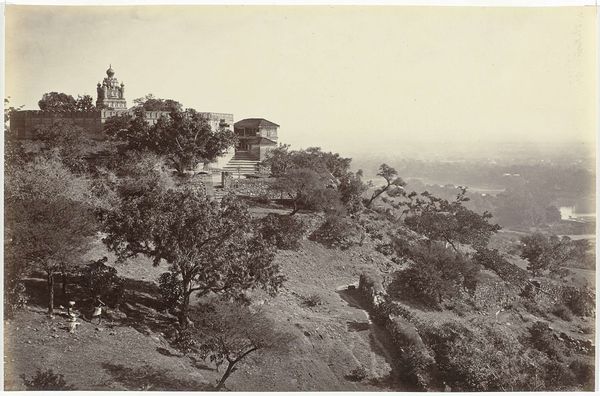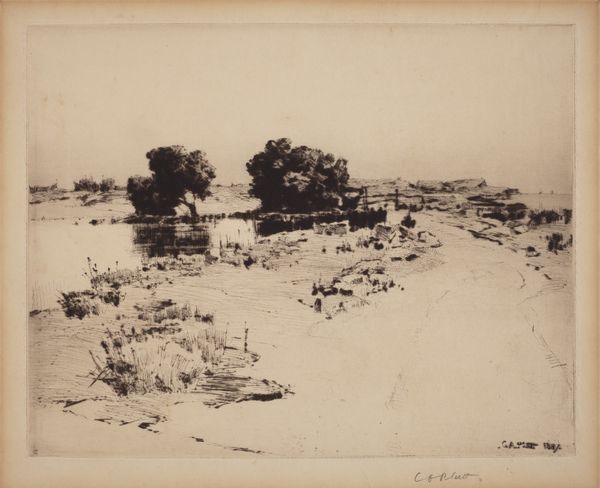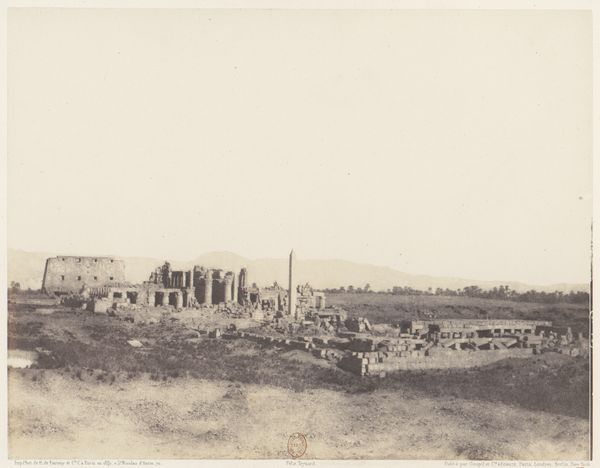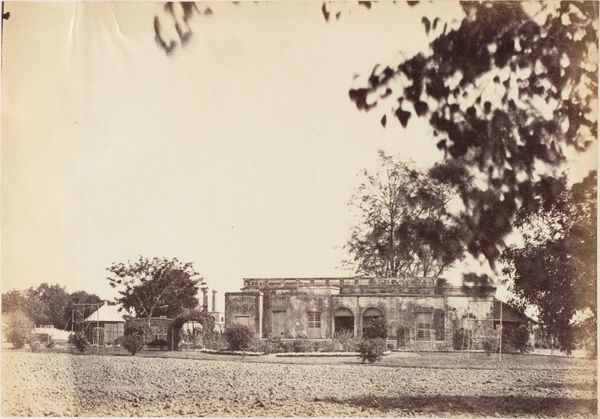
Dimensions: Image: 19.1 × 24.7 cm (7 1/2 × 9 3/4 in.)
Copyright: Public Domain
Curator: Standing before us is "St. Peters from the Pincian Hill," an albumen print crafted sometime between 1853 and 1856. It comes to us from the talented eye of Jane Martha St. John and now resides here at The Met. Quite lovely, isn't it? Editor: My first impression? There's such a sense of… distance. The way she frames the basilica with the garden foliage almost makes it feel like a dream, or a memory viewed through a soft lens. What strikes you most about the image? Curator: The symbolism, definitely. The gardens of the Pincian Hill— historically a place of leisure and contemplation. It’s this space between earthly delight and divine aspiration, carefully chosen, a perspective imbued with layers of meaning. I think of power, the church, the visible embodiment of faith dominating the scene even at a distance. Editor: Right! It's fascinating how she uses this soft-focus, almost hazy technique, so unlike the crisp precision we often expect from early photography. There’s a yearning for something beyond the visible. Curator: Photography at this time was so much about capturing ‘truth’. But, like a lot of Pictorialist artists, she seemed less interested in documentary realism and more in creating mood, atmosphere and emotional affect. Even technically, I think it reveals the photographer’s intent through composition: those large trees placed as the edge that frame the space almost as theatre curtains, that leads our eye deliberately toward the basilica in the far. Editor: Absolutely! It speaks volumes. You know, thinking about it, St. Peter's isn't just a religious symbol, but a monument to human ambition, ingenuity and striving towards something "higher," both literally and figuratively. What about St. John's own ambitions? Perhaps that soft focus implies her acknowledgement about those values, how fragile they might be. Curator: Or maybe her personal relationship with the Catholic church. The composition implies this artist’s subjective point of view. The gardens and their structures seem carefully crafted to highlight what appears in the back—all within the limits of a lens! Editor: This has offered me so much more to think about: not just what's depicted but why, and through whose eyes. Curator: Agreed, there are the external views, and our inner landscape, the symbolic resonance embedded within each print, waiting to be rediscovered again.
Comments
No comments
Be the first to comment and join the conversation on the ultimate creative platform.
